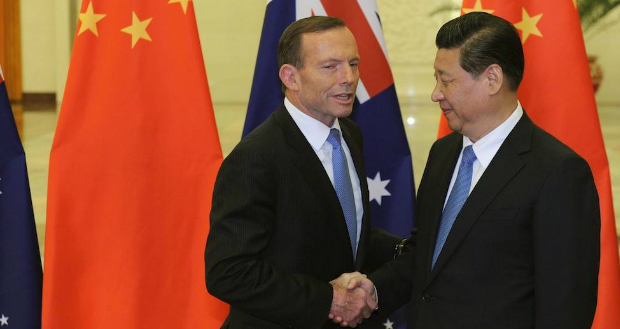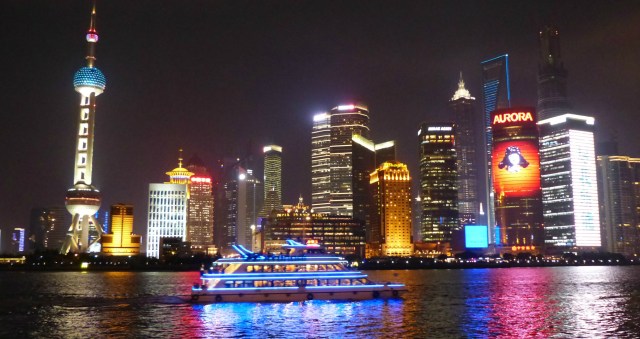
Printers stand to gain from the government’s Free Trade Agreement with China, says PIAA CEO Bill Healey, provided they jump on the opportunities that arise. The Australian manufacturing industry as a whole has had mixed feelings about the FTA, announced at the G20 Summit this week, with opportunities in exports counterbalancing increased local competition. However, Healey says that Australian printers are already competing with Chinese rivals, and the agreement is unlikely to heat up the competition for domestic print. He says, “We have had a pretty open economy now for some time. Much of the printing that is done in Australia now is time sensitive. We will continue to produce that work.”

FTA handshake: Tony Abbott, Australian PM (l), with Xi Jinping, Chinese President
It is in printing for exports that represents the opportunity for printers. Tariffs will be gradually removed on a host of products that needs packaging and labels, such as dairy products, beef, pork, sheep meat, horticultural products, wine, barley, seafood and processed foods such as fruit juice and honey. All these exports are set to boom. Government figures predict the FTA to net $18bn for the national economy over the next few years, with food exports a particular focus for growth – and potential boon for printers who diversify into packaging, says Healey. This should leave Australian producers better placed to satisfy China’s appetite, which is set to account for 43 per cent of global growth in agricultural demand by 2050. Switched-on packagers are already looking into the Asian market; US food giant Mondelez International this year opened a Food Innovation Centre in Victoria to investigate the Asian consumer. Mondelez has a number of university projects running to gather insights into the Asian market. One, with the University of Melbourne, is looking at premium exporting and how the provenance of food can be of value to Asian shoppers. A second, in South Australia, looks at how people select options in-store. Nicholas Georges, director of research, development and quality for premium chocolate and dairy in the Asia Pacific with Mondelez, says, “China is not an emerging market, it has already has a middle class of 300 million people. “Food is probably at the top of the shopping list as people gain affluence. We looked at this and thought yes, there is an opportunity.” Healey agrees and says the PIAA is forming an alliance with the food sector to develop packaging that supports higher levels of food exports and takes logistics, design and safety into account.

Melbourne packaging designer Boxer & Co created a modern Australian aesthetic for the packaging of Nutrico long life UHT milk for the Asian market
He says, “If we are going to get greater access to China’s food market then there are real opportunities for packaging. “We are already in discussions with the government’s food innovation body to come up with ways of building partnerships to understand and respond to the Chinese and Korean markets. “It is no good assuming we can send the same packaged products to China that we sell in the local supermarket, we need to understand and respond to their demands. And food is only one area in which we can value add.” Healey suggest that printers may also be able to offer design and creative services to China, as the printing industry broadens its expertise into communications, information and marketing. There may also be benefits for printers in the equipment and consumables market, as Chinese suppliers may be better placed to compete with other overseas manufacturers and create a buyer’s market. Healey says some pain points could be the effect on book imports, paper prices and foreign investment into an already crowded market. While the ongoing competition review to decide the future of the 14 day restriction on importing a new or reprinted book, which currently protects Australian printers, is not directly part of the FTA, Healey fears that it could influence the government’s decision. He says, “We are certainly keen to retain the restrictions on parallel importing of books. It is unclear whether the FTA will exacerbate that situation.” And while paper prices could be an area of concern, he hopes that the agreement will lead to greater scrutiny of dumping by Chinese companies. For Australian companies looking to grow offshore, Healry says the FTA is unlikely to smooth over the barriers of setting up a business in China, though it is a step in the right direction. He says, “It takes a lot of time to build relationships and partnerships. It is a long term commitment, to operate in China. “I suspect there will be an opportunity to explore closer cooperation with our existing areas of expertise.”
Comment below to have your say on this story.
If you have a news story or tip-off, get in touch at editorial@sprinter.com.au.
Sign up to the Sprinter newsletter


